Starry Messenger
-
Ships in 2 to 3 weeks
Details
Description
SKU: AN.AMP-1029
Composed by Z. Randall Stroope. Octavo. Alliance Music Publications #AMP 1029. Published by Alliance Music Publications (AN.AMP-1029).Stroope.
About the work...
Sidereus Nuncius - an astronomical treatise (and an advertisement by Galileo to promote his work) - was published in 1610. Below is the title page in translation:
of Galileo Galilei
Unfolding great and very wonderful sights
and displaying to the gaze of everyone,
but especially philosophers and astronomers,
the things that were observed by
GALILEO GALILEI,
Florentine patrician
and public mathematician of the University of Padua,
With the aid of the telescope which he recently devised,
the face of the moon, innumerable fixed stars,
and the Milky Way, cloudless stars,
but especially concerning
four planets
revolving around the star of Jupiter with unequal intervals
and periods, with wonderful swiftness,
which, known to no one up to this day,
the Author most recently discovered it for the first time,
and determined to name the
MEDICEAN STARS
Performance note...
The finger cymbals are a central component of this work. Each of the four section leaders (TTBB) need tohave a set of solid brass finger cymbals (symphony quality). Also, there needs to be another 4 sets of fingercymbals (can be inexpensive, classroom quality) in each section. Of course, this is dependent on the size ofthe chorus, where smaller ensembles might employ fewer finger cymbals. All finger cymbals need to bespecially distributed in a fairly equidistant pattern across the choir. The use of finger cymbals is notated inthe score. The dotted half note or whole note notation is not to be taken literally, but simply as an indicationthat the finger cymbals are to be played on those measures, prominently and randomly (in multiple rhythmicpatterns). The finger cymbals are the sonic representation of infinite twinkling stars across a vast universe.The singers should hold the finger cymbals up to the upper chest or neck level, so that the sound of thefinger cymbals will not be absorbed into the singer in front, as well as having a very interesting visual effectfrom the standpoint of the audience.Falsetto sound, principally carried by Tenor 2 is critical to the sonic landscape, and is arguably the moreimportant line when this occurs, surrounded by moving voices. Keep the falsetto bright, ringing (not breathy),and cutting through the texture.
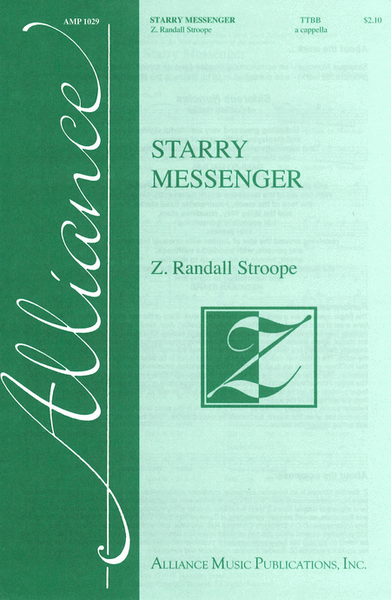
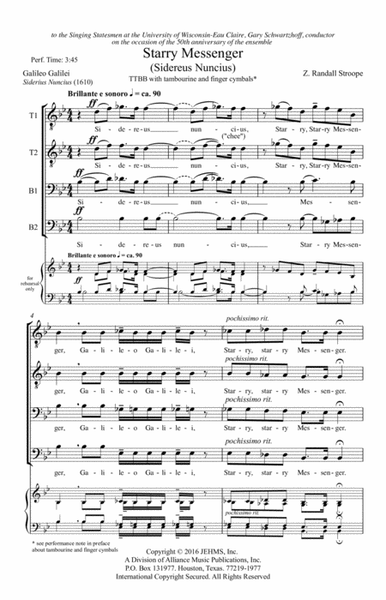
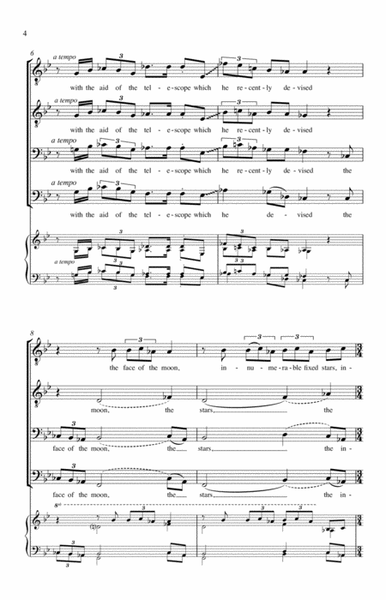
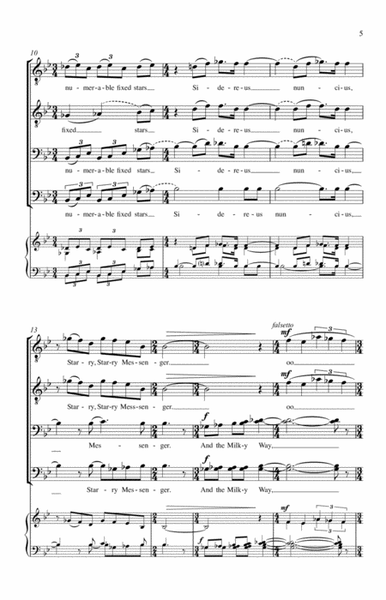
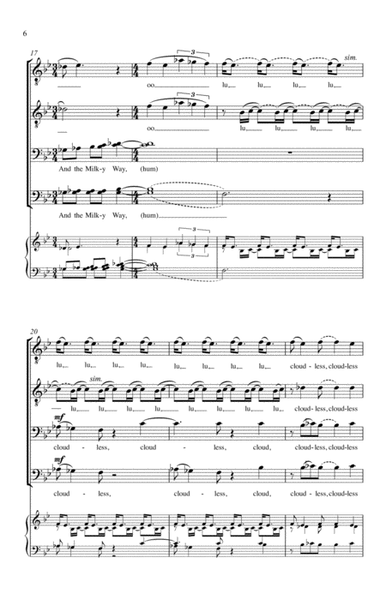
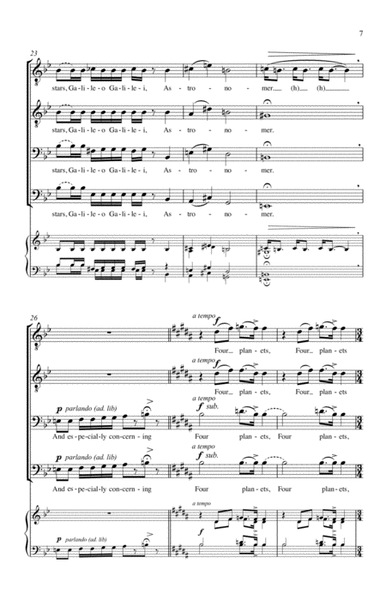
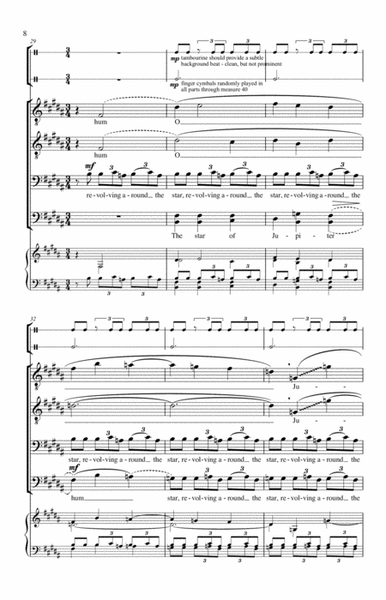
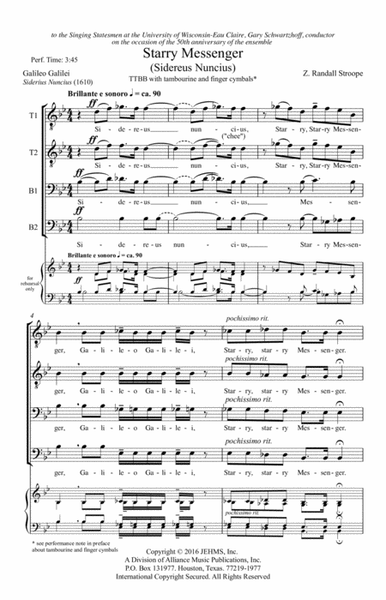
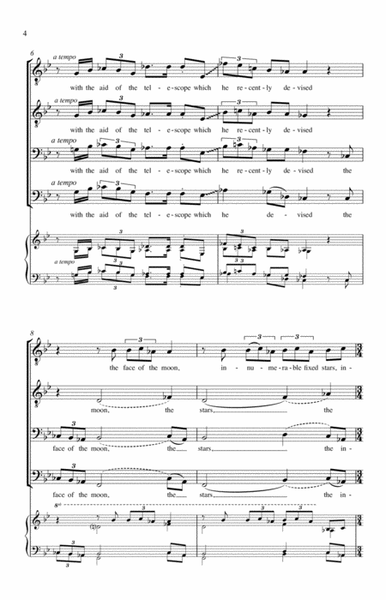
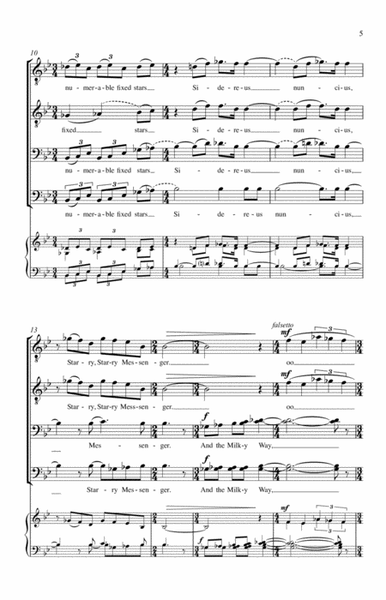
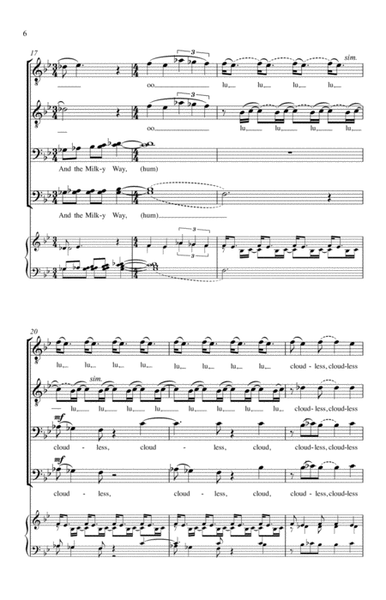
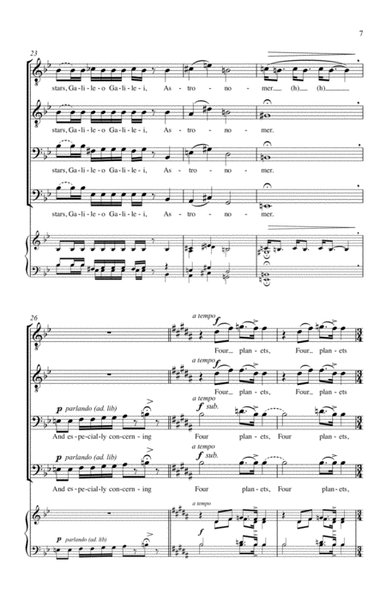
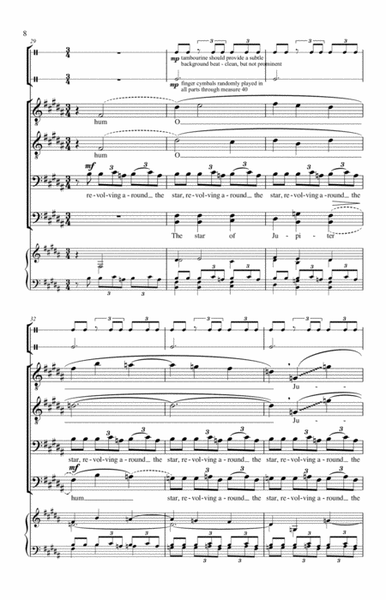
 Share
Share